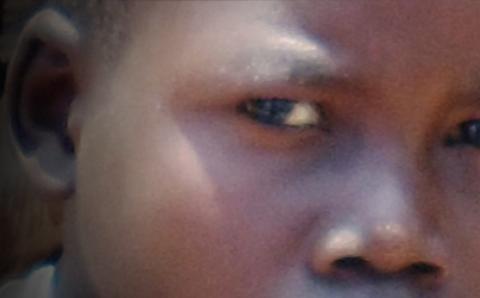As a high school vice-principal, I’ve seen my share of bullying. This fall will bring on familiar scenarios: Girls will shun a girl so that she refuses to come to school. Boys will make homophobic or racial comments to that kid in class who looks different and doesn’t seem to have any buddies. Parents will call me about a threat their son has received. A girl will be crying in my office about photos taken by her now ex-boyfriend that are making the rounds. There will be stare-downs, shoulder bumps, threats, and all kinds of gossip. And most of the bullying will include an online component.
Why Kids Bully
I’m always perplexed when adults can’t understand why bullying is so rampant amongst teens. Even a casual look at media and popular culture shows that bullying is not only prevalent in the adult world but is valued. Our culture models bullying.
Check out the website of any major newspaper and you’ll see comments after an article in which adults belittle and attack one another. We call that “open discussion.” Watch competitive reality shows such as Survivor or Amazing Race where competitors lie, gossip, and spread rumours about each other. We call that “good strategy.” On shows like Glee the humor often relies on kids and teachers being venomous toward one another. We call that “entertainment.” Take your beloved sport—hockey, basketball, football—and witness the trash-talk, put-downs, and physical intimidation. We call that “the game within the game”—a necessary element to win. In fact, fans stand up and cheer when it happens.
Many researchers believe the prefrontal cortex of the human brain—where good judgment and empathy live—doesn’t fully develop until people are in their mid-20s. So when we give fifth-grade children cell phones and tablets, as a growing number of parents are doing, and place them in a media and sports landscape that actually values bullying, should we be surprised when kids have the tools and are surrounded by role models to talk “smack” about each other? Just sayin’.
Why do kids bully? There are no neat answers. Yes, bullies probably have low self-esteem and were likely bullied themselves. Yes, kids like to empower themselves over other kids for no good reason. But the stereotypical “meanie” who steals a kid’s lunch money no longer defines the profile of a bully. More and more it’s “good” kids from stable families who are bullying other kids—mostly online. Recent media stories about bullying have featured cyber bullying: pictures of girls taken at parties or humiliating videos posted to YouTube. Social media are the wild, wild west for teens.
Often parents have no idea how their children are conducting themselves online. They think they do—but judging from the exasperated expressions on their faces when their child gets caught, it’s obvious they do not. Just yesterday I removed a student from school for homophobic slurs and threats toward another student. As his parents read the printed-out Twitter feed in disbelief, the son casually said, “It’s just the Internet, what’s the big deal? Everyone says that stuff on the Internet.” And he’s right.
Recently, we dealt with student council students who were making verbal attacks on several students and teachers. These are top students, athletes, and leaders. There seems to be a disconnect (there’s the prefrontal cortex not working again) with teens that their actions are even wrong. Why else would football players convicted of rape boast about their exploits online and completely expose themselves for their crime?
What Can Schools Do?
Schools need to develop deliberate strategies to both prevent and respond to bullying. Schools need to communicate clearly to parents that no forms of bullying will be tolerated; they need policies and processes with escalating consequences for bullies. That may seem obvious, but it’s surprising how often adults in a position to respond to bullying don’t acknowledge it as anything other than a teenage rite of passage. Even though it’s been decades now since schools endorsed initiation days for freshmen, there are still sports coaches who turn a blind eye to hazing.
Schools need a plan to embed digital citizenry in the lesson plans of every subject, starting in kindergarten. As more and more teachers use web 2.0 tools as communication and collaboration devices in the classroom, appropriate online interaction needs to be taught. At my school, we are planning a wider response to increased cyber bullying. We’re collecting samples of what kids are saying online and in texts and sharing them with students (minus the names) at a school assembly. We’re inviting a police officer, a counselor, an employer, and a college recruitment officer to talk to kids about how they are not only hurting others but how they are hurting their future prospects for acceptance to college or employment. Finally, bullying has to be part of daily conversation. Responses can’t simply be a one-off Pink Shirt Day or a school assembly. We need to engage students continuously in their responsibility to respect others.
The Role of Parents
It’s easy to tell parents that they need to monitor their children’s online and cell phone activity. Effective monitoring is a different story. As the world becomes wireless and as kids’ priorities turn increasingly to their digital devices, they find all kinds of ways to veil their online activity. They open Twitter and Instagram accounts for Mom’s eyes and have secondary accounts with their friends. Some parents take the “I don’t even want to know” attitude because the job has become so unwieldy. They will tell me they don’t even know how Twitter works.
Parents, you need to figure it out! As you give your kids tools such as cells phones and tablets, you need to deliberately learn how those tools work and teach them digital citizenry. A simple online search will turn up many resources to draw from (see sidebar). Don’t wait for a workshop leader to tell you what to do. Be proactive. Keep in mind that the social media scene is changing monthly.
Parents also need to take a hard look at their own online activity. The fastest-growing Facebook demographic is middle-aged people posting their own or their children’s accomplishments online, inviting those “likes” and “Wow” comments from extended family. This culture of display—some might call it narcissism—invites a response. And when kids imitate it, their peers aren’t equipped with the empathy and good judgment that parents might have in their responses. We put our kids at risk by modelling this kind of sharing when they naively do the same in a less accepting teen environment.
Bullying has been around since Cain and Abel, and it will be around until the end of time. When sin came into the world, humans turned on each other. We are called to love one another online as well as everywhere else—but simply telling teens to love one another isn’t enough. We need to execute a deliberate plan, the foundation of which is love for one another, at school and at home.
About the Author
Ron DeBoer is vice-prinicpal at Galt Collegiate Institute in Cambridge, Ontario. He is a member of The Journey Church in Kitchener, Ontario.









